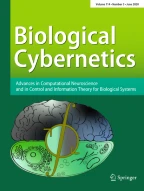Abstract.
Learning to make reaching movements in force fields was used as a paradigm to explore the system architecture of the biological adaptive controller. We compared the performance of a number of candidate control systems that acted on a model of the neuromuscular system of the human arm and asked how well the dynamics of the candidate system compared with the movement characteristics of 16 subjects. We found that control via a supra-spinal system that utilized an adaptive inverse model resulted in dynamics that were similar to that observed in our subjects, but lacked essential characteristics. These characteristics pointed to a different architecture where descending commands were influenced by an adaptive forward model. However, we found that control via a forward model alone also resulted in dynamics that did not match the behavior of the human arm. We considered a third control architecture where a forward model was used in conjunction with an inverse model and found that the resulting dynamics were remarkably similar to that observed in the experimental data. The essential property of this control architecture was that it predicted a complex pattern of near-discontinuities in hand trajectory in the novel force field. A nearly identical pattern was observed in our subjects, suggesting that generation of descending motor commands was likely through a control system architecture that included both adaptive forward and inverse models. We found that as subjects learned to make reaching movements, adaptation rates for the forward and inverse models could be independently estimated and the resulting changes in performance of subjects from movement to movement could be accurately accounted for. Results suggested that the adaptation of the forward model played a dominant role in the motor learning of subjects. After a period of consolidation, the rates of adaptation in the internal models were significantly larger than those observed before the memory had consolidated. This suggested that consolidation of motor memory coincided with freeing of certain computational resources for subsequent learning.
Similar content being viewed by others
Author information
Authors and Affiliations
Additional information
Received: 01 January 1998 / Accepted in revised form: 26 January 1999
Rights and permissions
About this article
Cite this article
Bhushan, N., Shadmehr, R. Computational nature of human adaptive control during learning of reaching movements in force fields. Biol Cybern 81, 39–60 (1999). https://doi.org/10.1007/s004220050543
Issue Date:
DOI: https://doi.org/10.1007/s004220050543
